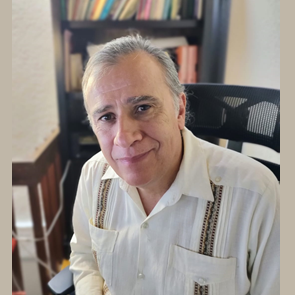Keynote Speakers

Entropic Associative Memory
Dr. Luis A. Pineda Cortés
Electronic Engineer from Universidad Anahuac, México; M. C. in Computer Science from ITEM, Campus Morelos, and PhD from the University of Edinburgh at the Centre for Cognitive Science (1990), where he was also an Associate Investigator (1989-1992). He was a researcher at Instituto de Investigaciones Eléctricas (1983-1986 and 1992-1998) and is a Titular Investigator at Instituto de Investigaciones en Matemáticas Aplicadas y en Sistemas (IIMAS) at Universidad Nacional Autónoma de México (UNAM) since 1998. He has published widely in Artificial Intelligence, Computational Linguistics, Service Robots, Computer Graphics, Urban Transport (metro systems) and Associative Memory and is the author of the book Racionalidad Computacional. He has created and coordinated several research groups including the Diálogos Inteligentes Multimodales en Español (DIME Group), the Golem Group for the developing service robots, and the Memoria Asociativa y Racionalidad Entrópica group (MARE) and has two patents. He has lectured in theory of computing, formal languages and automata theory, programming languages, computer graphics, knowledge representation, natural language processing and artificial Intelligence, mostly at the graduate program of Ciencia e Ingeniería de la Computación at UNAM. He has directed 8 doctoral, 13 master and 12 bachelor thesis. He sustains a large dissemination activity and is a frequent speaker at universities and research centers, and appears often in national TV, radio and other media. He is a regular member of Academia Mexicana de Ciencias and of Academia Mexicana de Computation of which was the founding president.
Entropic Associative Memory
The Entropic Associative Memory is a novel declarative, distributed and constructive computational model of associative memory. The model is general, conceptually simple, and offers an alternative to models developed within the artificial neural networks paradigm. In this talk the model is motivated from a historical and a conceptual perspective; its overall functionality and main properties are discussed, and the experimental results of the storage, recognition and retrieval of large data sets of visual and acoustic images are illustrated.






